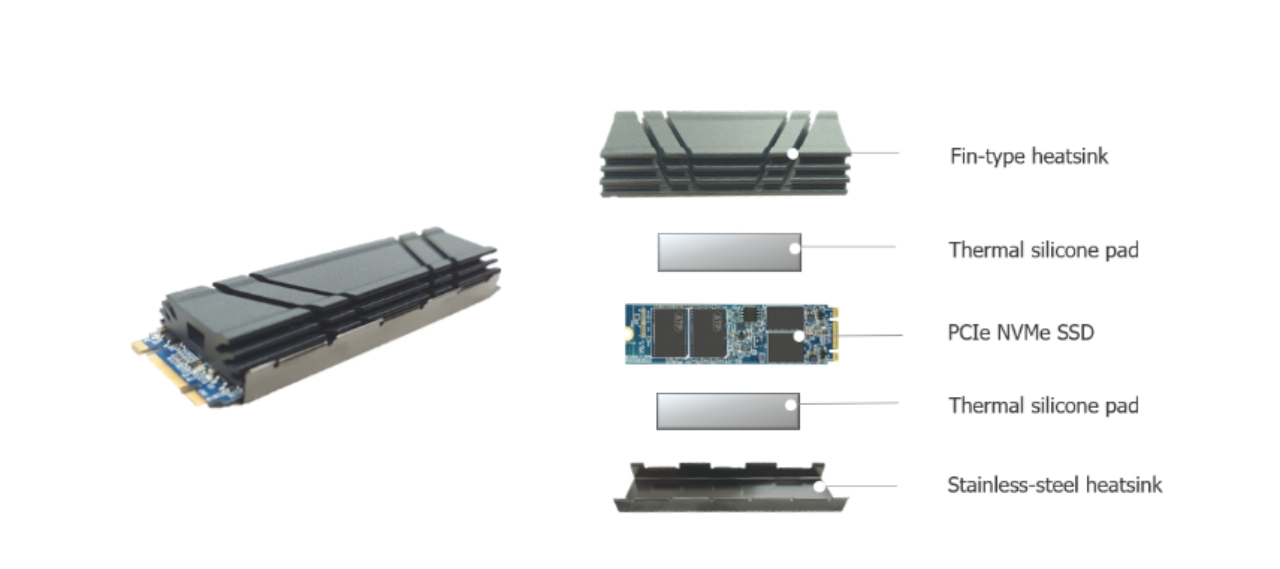SSD Thermal Management
Solid State Drives (SSD) are known to run at blistering speeds. They are several times faster than Serial ATA (SATA) Drives! As such, they are prone to overheating, especially when installed in systems with limited airflow. What can we do for SSD when it is overheating?
Thermal management is not single fact for overheating, but a system control. When temperature is around 80°C, it is upper limit for SSD, manufacturers need to supply a cooling mechanism for the SSD, or the drive will quickly heat beyond 70 °C.
In some cases, such as low-intensity use, airflow in the computer case or around the motherboard is enough for a drive to maintain acceptable temperatures. For more high-speed operations, a heat sink serves to dissipate heat from the drive well.
Heat sinks come in two basic varieties. Silicone thermal pads between the chipset and heat sink, help the heat transfer to the heat sink from the chipset faster. An active heat sink attaches directly to the SSD. It uses fans to cool it down.
In contrast, a passive heat sink cools the SSD through heat transfer, for example, through a slab of conductive metal attached to the SSD. This setup continuously pulls the heat it generates and dissipates it into the air. This is sometimes called a heat spreader.

Passive heat sinks offer several advantages over their active counterparts. They don't generate noise, they are not bulky and they also tend to be less expensive. The limitation of the passive heat sink is that it can't be switched into a higher rate of heat reduction if the SSD goes into a high-speed mode of operation. Its cooling capabilities are fixed.
A combination of sufficient, consistent airflow and a heat sink is the best approach. This assumes, of course, that the input air temperature is low enough to reduce heat on the SSD.
Some motherboard vendors make integrated heat sinks out of solid blocks of aluminum for M.2 NVMe SSDs. They act as a heat buffer instead of a heat sink because that much material can absorb heat without having sufficient surface area to dissipate it. This design gives the drive more time before needing to throttle.
Motherboard manufacturers have taken a leading role directly from the factories with increased density in passive cooling capabilities and even some highly customized active coolers. Cheaper motherboards now often ship with passive coolers, but the motherboard manufacturers have delivered an upgrade path to active cooling for sustained workloads to run at high speeds uninterrupted.
 中文
中文



.png) Search
Search


 >
>  Return to List
Return to List